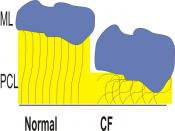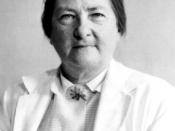Cystic fibrosis, also known as mucoviscidosis, is the result of a single faulty gene that appears on chromosome 7. It is a life threatening genetic disorder, meaning that it is not acquired; a person is born with it. Cystic fibrosis is autosomal recessive; this means that a person must have two copies of the faulty gene in order to have cystic fibrosis. A person with only one copy of the cystic fibrosis gene is called a carrier and experiences no symptoms. Often the person does not know they are a carrier.
Approximately one out of every 2,500 children in Canada - as with many other countries - is born with cystic fibrosis and presently over 3,400 Canadians are living with it. Approximately one in 25 Canadians is a carrier. It occurs in all parts of the world and in all races but is more common in European populations with 1:2000 to 1:4000 children being born with the disorder.
The gene which can cause cystic fibrosis normally would be used to make a cellular membrane protein that serve as channels in the passive movement of chloride between certain cells and the cells surroundings. However when a person has the faulty gene and therefore suffers cystic fibrosis, these proteins are defective or non-existent.
The lack of channels for chloride transport causes a build up of chloride outside the cell, which causes mucus that coats certain cells to become thicker and stickier than mucus that would coat normal cells. The mucus that is produced in the lungs of a cystic fibrosis sufferer sticks to the lungs and blocks some of the airways, which progressively inhibits breathing. Mucus accumulation favours bacterial infections and high chloride concentrations also leads to infections by hindering a natural antibiotic. Infections are followed by inflammation and pus starts to...



Thanks
This clears it all up for me. I went to school with a girl who had Cystic Fibrosis, i didnt no what it meant, no one did, she wouldnt say. But everyone knew she was going to die before she was 25, 21 or 22 the doctors guessed. I would look at her, she was so happy and popular yet in 6 or 7 years time, shell be dead. But thats, this has cleared up the whole matter, i still pray the doctors will find a cure, but good essay and well done!
2 out of 2 people found this comment useful.